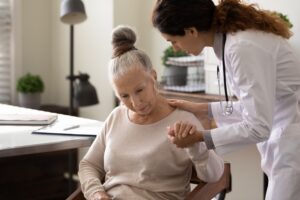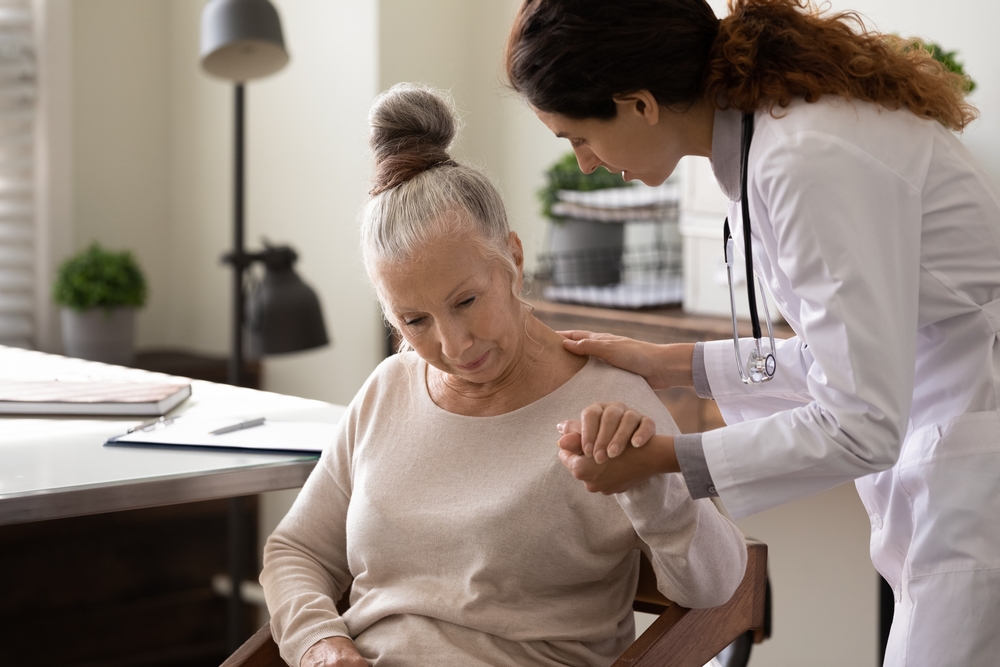Parkinson’s disease is a progressive neurological disorder that affects movement, balance, and coordination. While it often develops slowly, recognizing the early signs is key to getting the right support and improving long-term outcomes. Early diagnosis allows families and caregivers to create a plan, explore treatment options, and begin making helpful lifestyle adjustments at home.
In this article, we’ll explore the early symptoms of Parkinson’s disease, explain how diagnosis works, and provide guidance on managing care in the early stages — all with the goal of ensuring the best possible quality of life for your loved one.
Recognizing the Early Signs of Parkinson’s
Because Parkinson’s affects individuals differently, each stage of the disease calls for a unique approach to care. The earliest signs often fall into two main categories: motor symptoms and non-motor symptoms. Understanding what to look for is the first step toward seeking appropriate care.
1. Motor Symptoms
- Tremors: A slight shaking in the hands, fingers, or chin—often starting on one side of the body. These tremors may be more noticeable at rest.
- Slowed movements (bradykinesia): Your loved one may take longer to complete everyday tasks, such as buttoning a shirt or walking across a room.
- Muscle stiffness: Arms or legs may feel rigid, limiting the range of motion and sometimes causing discomfort.
- Balance and posture issues: An early sign can include stooped posture or difficulty maintaining balance, which may increase fall risk.
2. Non-Motor Symptoms

- Changes in handwriting: Handwriting may become smaller and more cramped, a condition known as micrographia.
- Loss of smell (anosmia): One of the earliest and most overlooked symptoms. This can affect appetite and enjoyment of food.
- Sleep disturbances: Vivid dreams, restlessness, and REM sleep behavior disorder may begin to appear.
- Digestive changes: Persistent constipation or changes in urinary habits can signal early nervous system involvement.
- Mood and cognitive changes: Depression, anxiety, and mild memory lapses are common but often misunderstood.
These symptoms can be subtle and easily attributed to aging. But noticing a combination of them is a strong signal to consult a healthcare provider.
When to See a Doctor & Diagnosis Process
If you recognize any of these symptoms in a loved one, it’s important to schedule a consultation with a neurologist promptly. Early diagnosis is crucial in managing the disease and maintaining quality of life.
What to Expect During Diagnosis:
- Comprehensive medical history and symptom review: Your doctor will ask about physical and emotional changes and when they began.
- Neurological examination: The doctor will assess motor skills, reflexes, coordination, and muscle tone.
- Imaging tests: Although no single test confirms Parkinson’s, scans like MRI or DaTscan can help rule out other conditions with similar symptoms.
Diagnosing Parkinson’s is primarily clinical, meaning it’s based on observed symptoms and exam findings. Early diagnosis helps begin treatment plans sooner and enables families to make important care decisions.
How Caregivers Can Support a Loved One in the Early Stages
Caring for someone newly diagnosed with Parkinson’s involves a thoughtful approach that balances assistance with independence.
- Encourage treatment adherence: Support your loved one in taking medications on schedule and communicating side effects to doctors.
- Foster independence: Encourage them to stay active and involved in daily routines to maintain a sense of purpose and control.
- Emotional support: Listen without judgment, and be mindful of mood changes. Counseling or support groups can help.
- Home safety modifications: Install grab bars, remove trip hazards, and ensure good lighting.
Over time, your role may shift. Building a strong foundation of communication and routine now can ease the transition into later stages.
The Role of Home Care in Managing Parkinson’s
In-home care is especially beneficial in the early stages when patients are adjusting to new challenges but still want to maintain independence.
- Home health aides can assist with bathing, dressing, mobility, and light housekeeping—allowing family caregivers to take breaks.
- Medication management services help ensure that medications are taken correctly and consistently.
- Rehabilitative therapies: Physical therapy improves mobility and balance, while occupational therapy helps adapt daily tasks.
- Nutritional support: Diet can affect medication effectiveness and overall energy. Home aides can support healthy eating routines.
These services create a safer, more supportive environment and reduce hospital visits, helping patients with chronic conditions live with greater dignity and comfort.
Support Resources for Families and Caregivers
You’re not alone in this. As you navigate a loved one’s diagnosis, you’ll find strength in education and community.
- Support groups: Whether online or in person, these offer a chance to connect with others experiencing similar challenges.
- Caregiver education: Resources like this personal hygiene guide help families learn best practices.
- Choosing the right home care: Knowing your options gives you more control and confidence.
- Beginner’s guide to home care: For those unfamiliar with what home care entails.
- Financial assistance: Insurance coverage, Medicaid waivers, and local non-profits can help ease financial stress.
If you’re unsure where to start, reach out to Americare to speak with someone who can guide you through your options.
How Americare Can Help
Recognizing the early signs of Parkinson’s disease allows families to take action and plan ahead. With early intervention, compassionate care, and the help of trained professionals, many people can live well with Parkinson’s.
If you’re noticing symptoms or have received a new diagnosis, know that support is available. In-home services, educational resources, and community programs are ready to help.
Explore your options and learn how Americare’s services can make this journey more manageable — and more hopeful.

